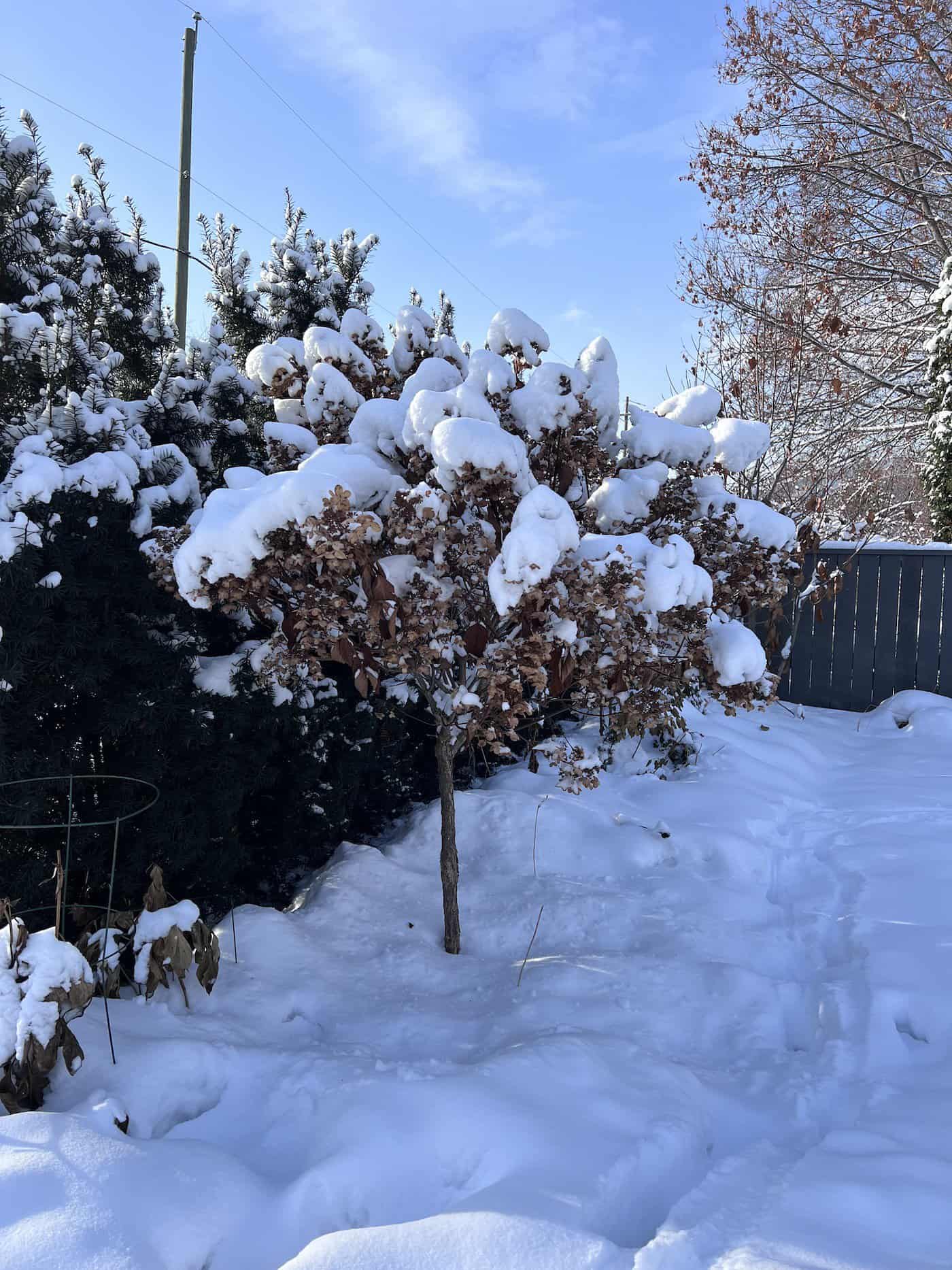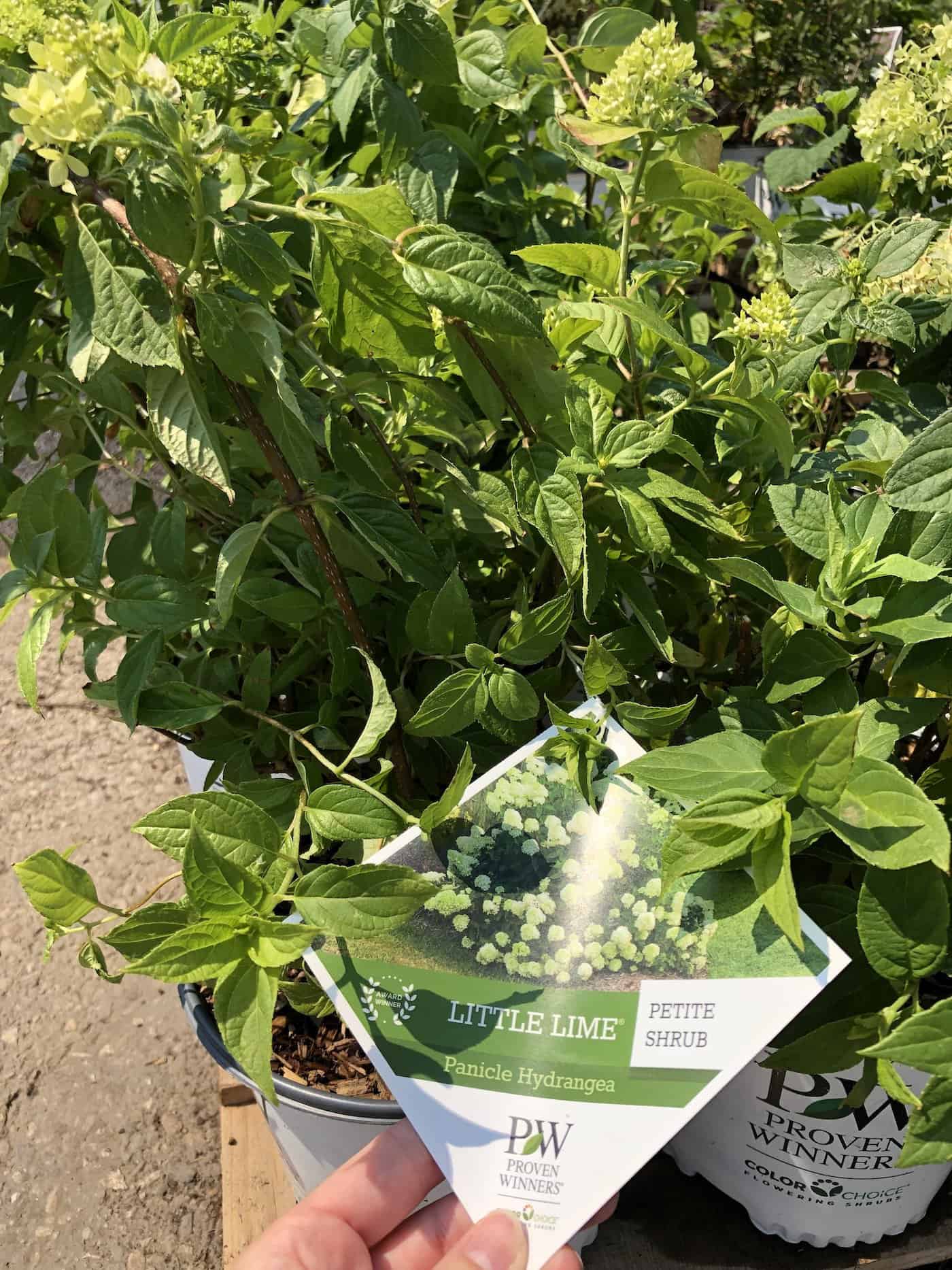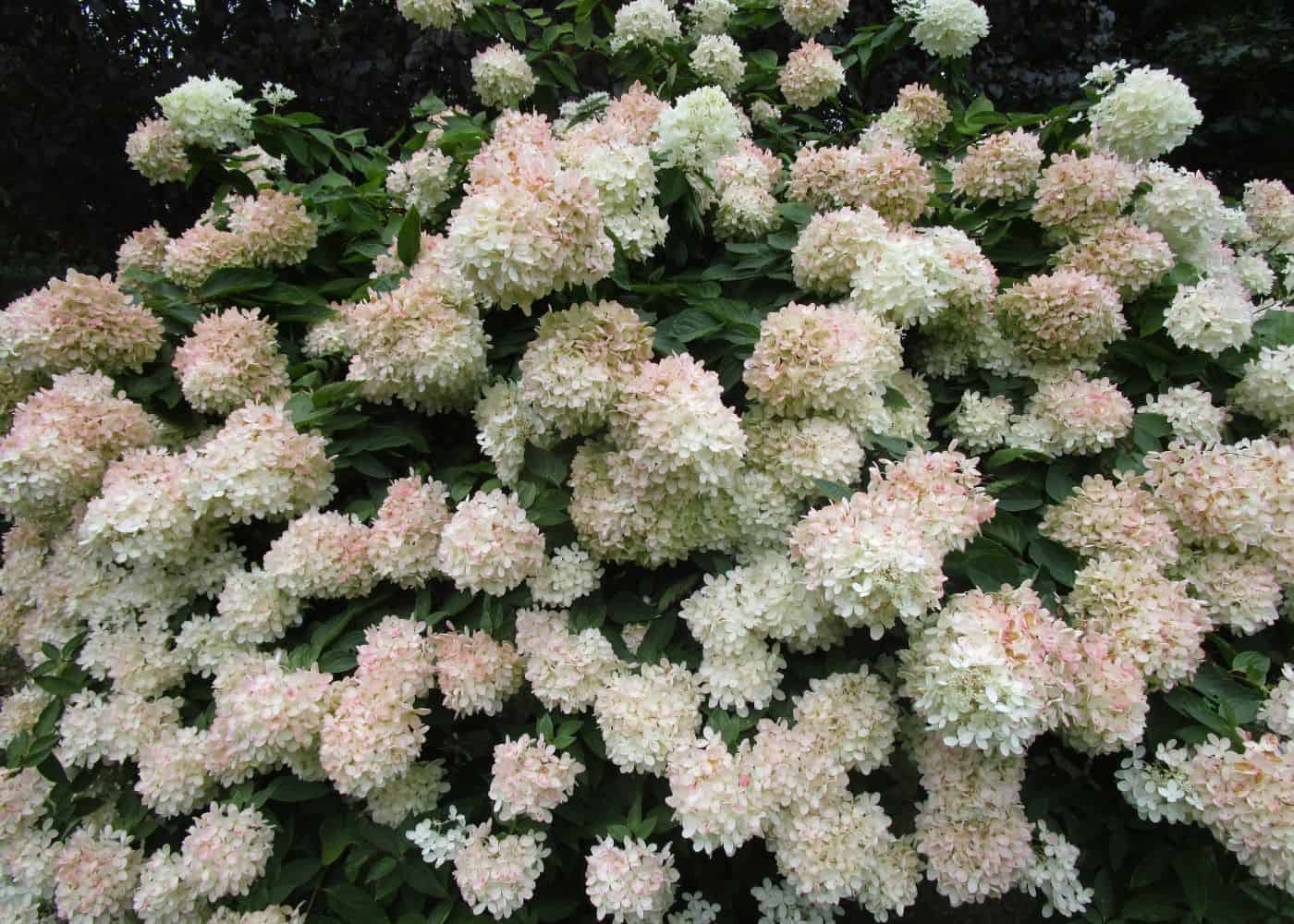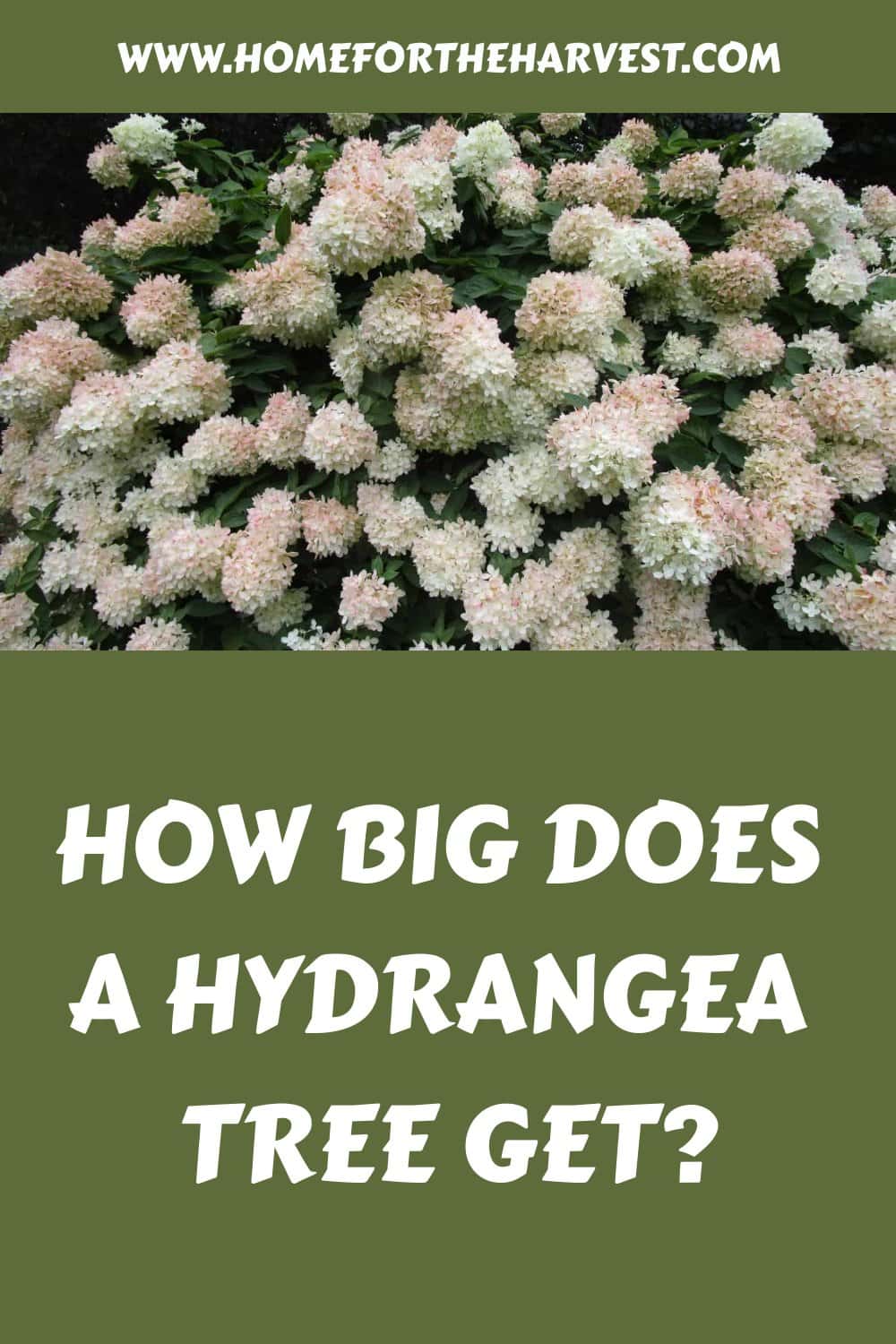Hydrangea trees typically grow to reach 6-8 feet tall with a canopy width of 4-6 feet wide. Newer compact cultivars like ‘Little Lime’ tend to reach a diminutive 4-6 feet tall at maturity, while some of the older varieties like ‘Pee Gee’ can reach up to 15-20 feet in good growing conditions. While hydrangea trees can certainly grow quite large with special care, most cultivars do not grow over 10 feet tall.

How big does a hydrangea tree get?
Depending on the type of hydrangea, the tree can grow anywhere from 4 to 20 feet tall and wide. Most tree-form hydrangeas on the market are cultivars of the species Hydrangea paniculata, as this type is most widely adaptable to standard training, different soil types, and varying sunlight conditions.
Here are the expected sizes of some common varieties of hydrangea trees:
Table 1: Estimated mature sizes of common tree-form hydrangea cultivars
| Cultivar | Height | Width |
|---|---|---|
| Bobo hydrangea tree (Hydrangea paniculata ‘Bobo’) | 4-5 feet | 3-4 feet |
| Little Lime hydrangea tree (Hydrangea paniculata ‘Little Lime’) | 5-6 feet | 3-5 feet |
| Berry White hydrangea tree (Hydrangea paniculata ‘Renba’) | 6-7 feet | 4-5 feet |
| Vanilla Strawberry hydrangea tree (Hydrangea paniculata ‘Renhy’) | 6-7 feet | 5-6 feet |
| Limelight hydrangea tree (Hydrangea paniculata ‘Limelight’) | 6-8 feet | 6-8 feet |
| Quick Fire hydrangea tree (Hydrangea paniculata ‘Quick Fire’) | 6-8 feet | 6-8 feet |
| Fire Light hydrangea tree (Hydrangea paniculata ‘Fire Light’) | 6-8 feet | 6-8 feet |
| Pinky Winky hydrangea tree (Hydrangea paniculata ‘Pinky Winky’) | 6-8 feet | 6-8 feet |
| Pink Diamond hydrangea tree (Hydrangea paniculata ‘Interhydia’) | 10-12 feet | 6-10 feet |
| PeeGee hydrangea tree (Hydrangea paniculata ‘Grandiflora’) | 10-20 feet | 8-16 feet |
For additional interesting varieties, check out this list of top hydrangea cultivars for some inspiration.
How to grow a large hydrangea tree
To grow a particularly large hydrangea tree, start with a cultivar that tends to grow large. One of the most popular is the PeeGee Hydrangea (Hydrangea paniculata ‘Grandiflora’). These trees are usually 10-20 tall but can grow to over 25 feet in ideal conditions.
Once you’ve found a larger cultivar, be sure to plant it somewhere that it will receive ample amounts of both sunlight and water. Tree hydrangeas can handle full sun (and will grow faster with full sun) as long as the roots have access to enough moisture. Well-drained soil that is slightly acidic is also ideal.
Have your garden soil tested before planting the hydrangea tree so you can mix in any minerals deemed deficient. You can also test the soil around the drip line of previously planted trees. Correcting any nutrient deficiencies will help keep the tree from being stunted.

How to grow a small hydrangea tree
To grow a smaller hydrangea tree, start by finding a plant that is a dwarf cultivar. If you like the look of ‘Limelight’, look for the miniature version called ‘Little Lime’ . If you like ‘Quick Fire’, look for ‘Little Quick Fire’. These compact cultivars are becoming more common and are worth searching out as they fit well into urban and garden landscapes.
To keep the tree small in maturity, start by buying quite a young tree. Then you’ll have the most control over how the canopy fills out. You’ll also want to look for a specimen that has a shorter trunk, if possible.
To encourage the young tree to stay small, cut the branches of the canopy back by about 1/3 to 1/2 in the summertime. Summer pruning of woody plants tends to stunt growth and can help keep it from becoming large and unruly. Once the size of the canopy has stabilized when the tree is older, you can do annual pruning in the early spring to preserve the blooms into autumn.
Another way to keep a hydrangea tree small is to plant it in a container. You can plant it in a large container, like a half-whisky barrel. Just be sure to mix in some mineral soil from the ground in addition to the potting mix, as these plants don’t grow very well in the soil-less mix for the long term. You might also consider a fabric pot, as exposure to the air can lead to automatic root pruning, which is another way to keep the plant compact.
How to keep your standard hydrangea tidy
The tree hydrangea is more difficult to care for than the hydrangea bush. However, the hydrangea is a beautiful addition to your garden. Whether you are trying to plant a tree hydrangea or a hydrangea shrub, here are some tips for you.
Most standard tree hydrangeas are panicle hydrangeas. The tree’s flowers start out as cream-colored but turn to pink and purple when they mature. The foliage is dark green and grows 3 to 6 inches in diameter.
It is a good idea to prune your tree hydrangea at least once a year. This will help maintain its shape and increase the number of flowers it produces. You should also prune it in the spring before it begins to develop buds.
If you have a problem with deer, you may want to fence the area around your hydrangea or protect it with netting or a deer repellent. They are very fond of these plants.
Panicle hydrangea grows in USDA plant hardiness zones 3 through 8. In a container, it may only survive cold winters down to about zone 5, so be sure to give it some extra protection if living in a cooler zone.
If you live in a colder region, you can expect the tree hydrangea to bloom later in the season. In fact, some hydrangeas will not start to produce buds until late July or early August.
Ideally, your hydrangea should be planted in a spot that receives a minimum of four hours of full sun daily. In general, the morning sun is preferable to the evening sun. The tree hydrangea will also benefit from some fertilizer in the spring. You should also be careful not to over-fertilize, which can lead to lush foliage and a lack of flowers.







